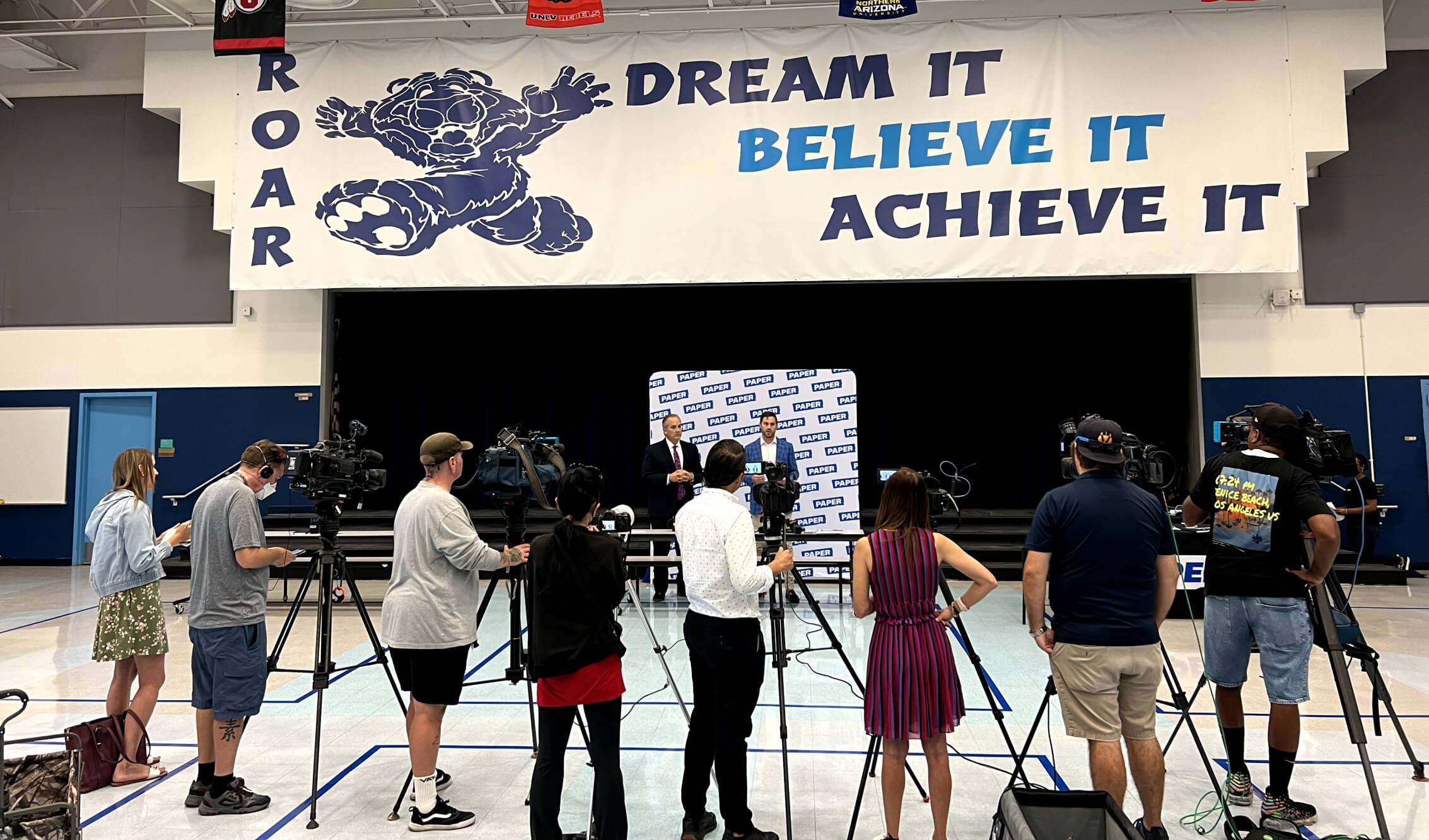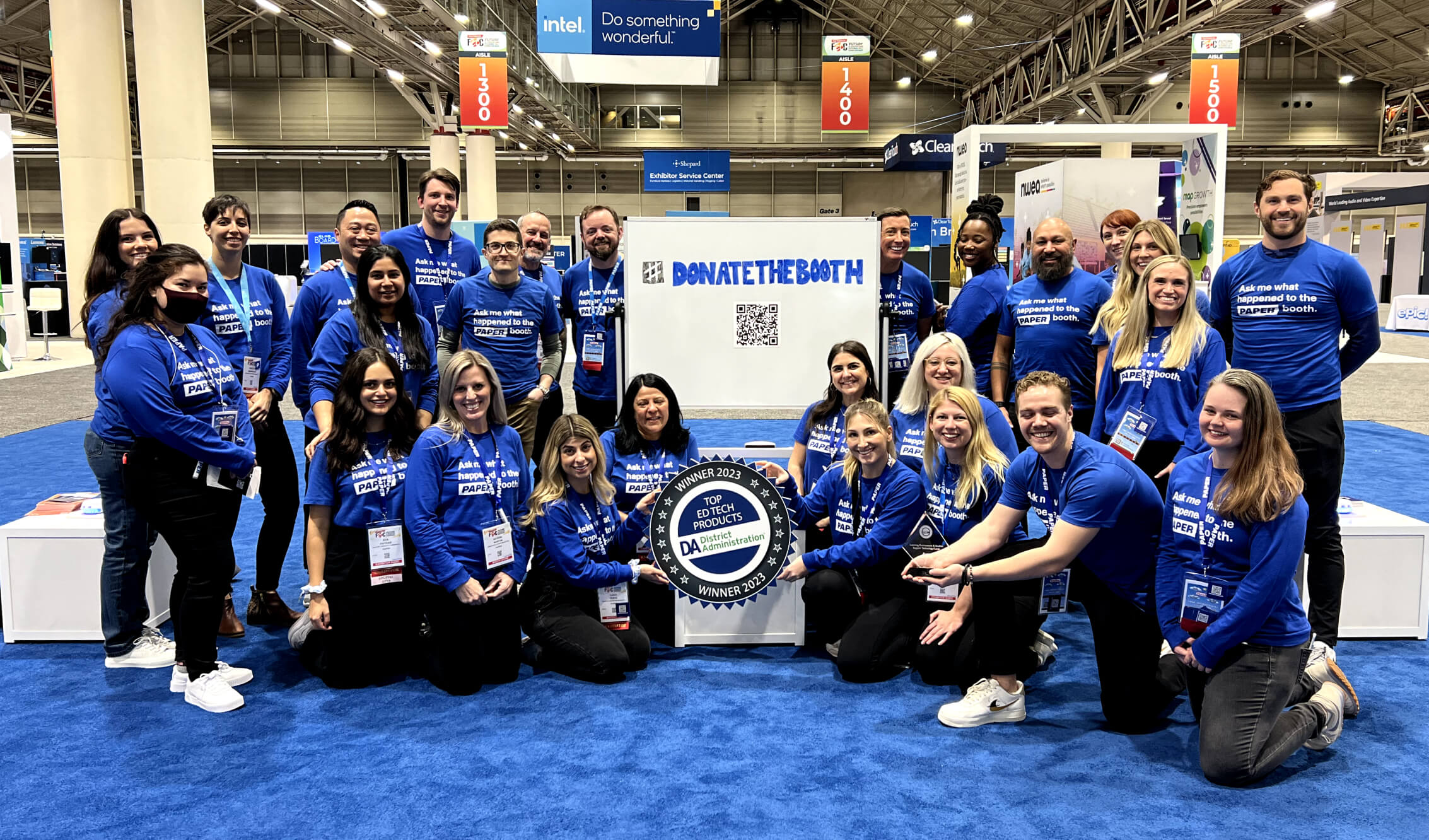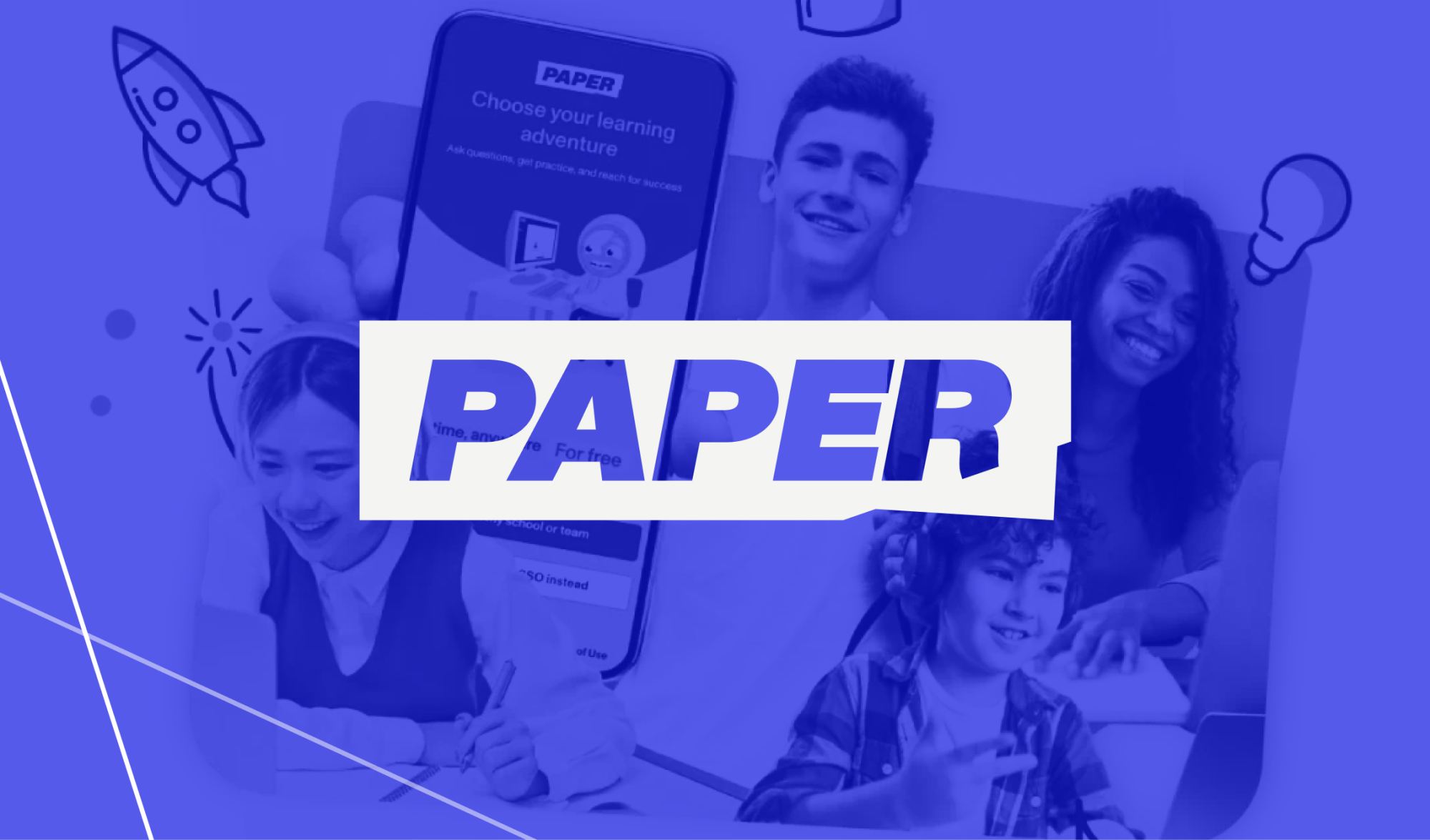Paper uses tech to empower over 3 million students and break down barriers to educational equity
When educational startup Paper closed its $343 million CAD series D round, it joined a rarified tier of tech companies— not just because of its high valuation, but its ability to combine financial success with work that tangibly improves lives.
Paper’s core goal is to achieve educational equity. It’s a complex problem that only worsened over the pandemic and will take a combination of innovative tech and finely-tuned empathy to solve. It’s a big task, but the future looks bright, because it’s exactly those qualities that helped Paper survive and thrive through its journey as an edtech startup.
The not-so-straight path from pre-seed to series D
“We’ve been at both ends of the extreme when it comes to fundraising,” says Paper co-founder and CEO Philip Cutler. “When we started the business, nobody had any interest in education technology from a venture perspective because companies that came before us had been very unsuccessful at delivering long-term outcomes VCs expect. After that happens a few times a whole sector can get cold.”
“When we started the business, nobody had any interest in education technology from a venture perspective.”
In Paper’s series A round, Cutler says they pitched 125 funds over at least 300 meetings, but “it was almost impossible to get financing.”
However, the pandemic’s rapid escalation of technology in schools changed the investment climate. Suddenly, VCs saw possibilities where they didn’t before. Paper, which had persisted and adapted through the tough times, was poised to take full advantage.
“One thing we didn’t do that a lot of other companies did, not just in education, but in general, was take valuations that are practically impossible to grow into, with round sizes that are just too small and with not enough capital to get to the next milestone,” says Cutler. “We were very intentional with every financing. We did not just take the highest valuation because we were eager to get a deal. We said, does this make sense for us? How much capital do we need? And how will investing that capital get us to the next milestone that will be beneficial to our investors?”

Phil Cutler, CEO & Co-founder, Paper
Some unicorns start in garages; Paper started in a classroom
Cutler comes by his passion for education honestly. He began his career as a teacher, and saw the impacts of educational inequity firsthand. “It became apparent to me that many students were going out and getting extra support, but that support was typically paid for by families who could afford it and provided to students who were actually already doing quite well,” says Cutler. “In reality, it’s the other 80 to 90 per cent of families who just couldn’t afford support that needed it.”
At first, Cutler didn’t think he was starting a major business, but rather a way to support schools he was affiliated with as a young substitute teacher and beef up his resume for a coveted full-time role (at the time, it was extremely difficult for recent graduates to find jobs as teachers). “It became more clear, as I had conversations with others, educational inequity is happening everywhere— it’s actually pretty prevalent in all schools. It required a solution that would be very highly scalable and one that would require a lot more structure than that initially anticipated.”
The connection between educational inequity and motivation
Of course there are socioeconomic factors that influence educational inequity, but Cutler looks at the issue through a unique lens. In his eyes, many students’ problems boil down to motivation— or lack thereof. Yet, he doesn’t see unmotivated students as personally at fault, but a symptom of a broken system.
“The number one reason behind broader inequities actually ties more to students understanding the ‘why’ behind the courses that they’re taking,” says Cutler. “What I mean by that is 30 per cent of students who graduate high school go on and graduate from four year college. Those are our doctors, lawyers, people who end up in finance, marketing degrees, etc. Most of these students understand the connection between the courses they’re taking and their career path.”
“There’s a direct correlation between things like attendance, dropout rates, graduation rates, likelihood to volunteer and student motivation. And student motivation is very tied to the ‘why’ behind the courses you’re taking.”
However, “Seventy percent of students don’t graduate from a four-year college; they go to technical or vocational schools, go into the trades, the military, or straight into the workforce. These students don’t have that same level of context. We’ve got a lot of research on this— there’s a direct correlation between things like attendance, dropout rates, graduation rates, likelihood to volunteer and student motivation. And student motivation is very tied to the ‘why’ behind the courses you’re taking,” he says.
This motivation gap is the key one Cutler and his co-founder & COO/CTO Roberto Cipriani hope to close with Paper.
How Paper motivates a wide range of students
Paper engages students by meeting them where they’re already at. “If the students are behaving a certain way, they’re going to behave that way. If you try to resist it, you’re probably going to lose them,” says Cutler. “So we’ve started to spend a lot of time getting information from our students on what’s most interesting to them. We’re seeing students consume hours and hours of video content on a daily basis. They don’t want to be sitting in Zoom call and we learned early on they don’t like the idea of live video conferencing for getting support. They’re laying in bed at 10 p.m. and don’t want to speak to some stranger with their camera on.”
“If the students are behaving a certain way, they’re going to behave that way. If you try to resist it, you’re probably going to lose them.”
Instead, Paper creates video content that ties into academic and life skills and mimics the sort of streaming content kids and teens already love on YouTube and other social media sites. They offer “math missions” that gamify learning and give students a chance to be featured on a leaderboard, just like in their favourite video games. Live Help is available via a messenger-like chat box that allows tutors and students to share a digital whiteboard they can draw and demonstrate math problems on.

Phil Cutler, CEO & Co-founder, with Dr. Jesus Jara, Superintendent of Clark County School District, to announce the launch of Paper in CCSD in August 2022.
Paper’s acquisitions of MajorClarity and Readlee
Paper has also recently made two major acquisitions. The first, of MajorClarity, offers post-secondary planning not just for university-bound students, but also for the 70 per cent of students who graduate high school and don’t enroll in a four-year college. They help students who want to go into the skilled trades or perhaps nursing understand which high school courses and microcredentials will set them up for success. MajorClarity has even worked directly with employers to create targeted microcredentials to open up roles to more applicants and accelerate the hiring process.
Their other recent acquisition is of Readlee, an artificial intelligence-based literacy tool. Readlee can listen to students read aloud and provide instant feedback to improve both literacy and student confidence.
“Reading has been something we’ve focused on for a really long time because, in our eyes, it’s the most foundational skill students need when preparing themselves for life after graduation. And this isn’t just the workforce; this is just being able to enjoy things in life, your ability to read and communicate on a daily basis, there are a lot of benefits to that,” says Cutler.
Speaking of artificial intelligence…
The advent of ChatGPT and other new AI technologies are threatening to shake up the education sector. Online, much concern focuses on the increased potential for cheating and plagiarism. However, Cutler sees different opportunities for students and teachers alike.
“It’s one of the first times we’ve seen a really significant advance in technology and the first place people’s minds go is education.”
“All the generative AI technology is really interesting and exciting. It’s one of the first times we’ve seen a really significant advance in technology and the first place people’s minds go is education,” says Cutler. While he doesn’t see AI replacing Paper’s live tutors any time soon, he does see an ability to supplement their support. “What it can do is personalize the experience for every student in ways that we just can’t do in differentiated lessons or as humans because it’s just too complicated.”
Cutler provides an example where a math problem is presented to two students. Perhaps one student is interested in basketball, and another in collecting stuffed animals. With the help of generative AI, the students could get the same question substantively, but contextualized for their individual interests. “All of a sudden, you’ve got a student who’s interested in that question and motivated in that class because we tied it to them.”

The Paper team attending the Future of Education Technology Conference 2023 in New Orleans.
Paper’s connection to RBCx
When Paper first started, Cutler and Cipriani were clients of the core bank. However, as the company’s potential grew, the co-founders realized they needed specialized services. “It became clear there was an opportunity for the business to be more efficient with a banking partner who actually understood what our needs were,” says Cutler. “The vast majority of banks that exist out there actually aren’t designed to support businesses like ours— they have red tape, they have mechanisms in place that detract from the business’s operations and actually discourage the growth that the venture capital world expects.”
This is where RBCx came in, which Cutler calls “more than just a banking solution… RBCx understands.”
To learn more about Paper, visit https://paper.co/
RBCx backs some of Canada’s most daring tech companies and idea generators. We turn our experience, networks, and capital into your competitive advantage to help drive lasting change. Speak with a RBCx Technology Advisor to learn more about how we can help your business grow.
